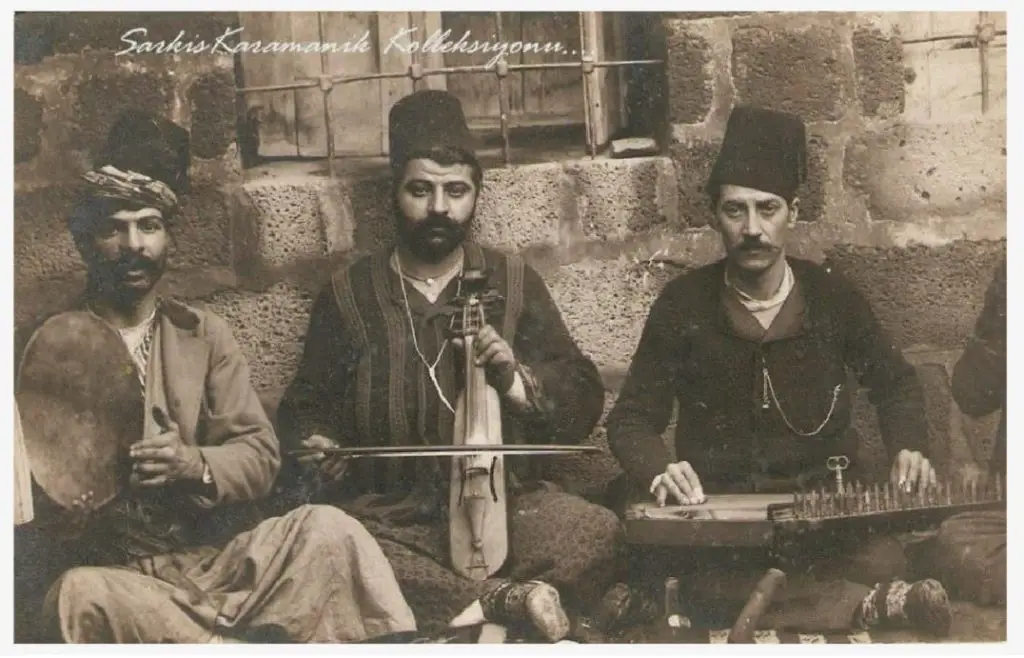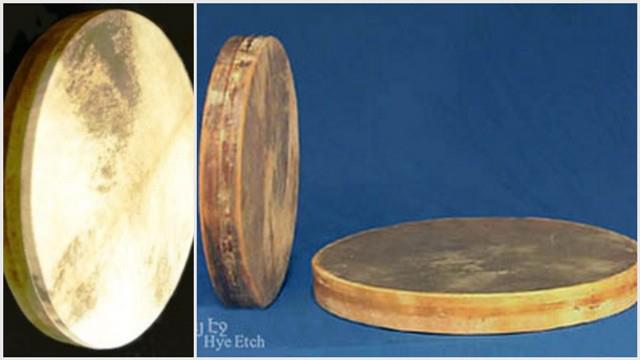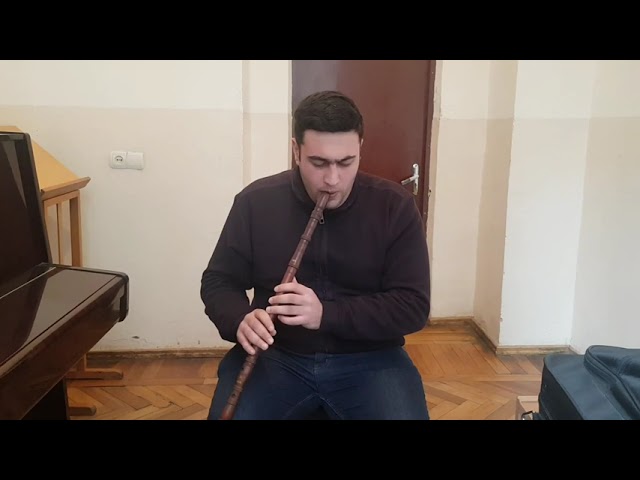Instrumental Folk art is the category of Armenian folk music that has accompanied people for centuries and has become an integral part of their lives.
Instrumental music was played on different occasions in people’s lives – during feasts, ceremonies, and even during funerals.
People reflected their inner world and national spirit, native nature, work, and life in folk songs, traditional instruments, and music.
In this article, you will be reading about some musical instruments invented in Armenia or widely used there.
Percussion Instruments
Dhol – Tmbuk
A double-barreled percussion drum, the frame of which is made mainly of fir, walnut, and pine wood. The hollow cylinder is 30-40 cm, on which the membrane of a goat is stretched. The membrane on one side is usually thin, and the other is slightly thicker.
The diameter of the stretched membrane is 33-50 cm. The membrane is stretched on the open part of the cylindrical body using wooden or metal rings, with the help of cross ropes wrapped around the frame.
A belt is attached to the cross ropes to hang the dhol from the shoulder. A small hole is drilled in the body to adjust the volume. The membrane is kept on fire before playing to increase the volume.
The dhol is played with the fingers or with the help of two sticks of different thicknesses.

Dap – Dahira

Dap is a single-headed Ancient Armenian frame drum. The wooden frame drum is 35 to 50 cm in diameter, with jingles (metal rings, rattles, silver coins, etc.) attached inside the frame and sound when the drum is played or shaken.
It consists of a round, not wide wooden frame with a leather cover on one side. Used with its various forms and names, it is used by both the peoples of the East and the West. On the inside of the wooden frame hang metal rings, medals, silver coins, and other sound accessories.
It is played with the palms of hands, tapping the membrane with fingers and shaking it. For Armenians, as for other people of the Caucasus, the dap is an ensemble instrument.
Tsntsgha
Has a loud sound. It has been known since ancient times in Armenia (7 century BC), China, India, and later in Greece and Turkey. It is a convex disk made of special alloys. There is a hole in the middle of the clamp to attach the tool to the trigger or rope.
The main tricks of playing the instrument are strikes with different sticks and on discs hanging with mauls, strikes with a pair of bells, and with a bow. The sound stops when the musician puts the discs on his chest.
Tsntsgha is similar to modern-day cymbals

The first Zildjian cymbal was accidentally created by the alchemist, Avedis Zildjian, who was trying to turn metal into gold. Instead, he created an alloy of tin, copper, and silver that produced musical sound without shattering.
The recipe for this alloy is a family secret and has been passed down by each generation of cymbal makers.
Wind Instruments
Shvi
Armenian national instrument. The name comes from the root of the word “shvvots” (whistle). Shvi is one of the oldest Armenian instruments, known since time immemorial.
Shvi is made of natural wood (mainly apricot) or reed. The size of it varies. On average, shvi is 30 cm long.


Duduk or Apricot Pipe
An Armenian brass instrument common in the Middle East, including in the life of the Caucasian nations. It is used both solo and in ensemble forms. World-famous composer Aram Khachaturian wrote: “The duduk is the only instrument that makes me cry.”
Ethnomusicologist Jonathan McCollum says: ”Duduk is the only Armenian musical instrument that has survived to this day. It is the symbol of Armenianness. The main feature of the duduk is the transmission of Armenian peculiarities to the listener. ”
In 2005 Armenian duduk has been recognized as a UNESCO World Intangible Cultural Heritage.
The duduk is made of apricot wood. The length of the money is 28, 33 or 40 cm. It has seven or eight holes on the top for playing and one or two on the opposite side for the thumb. The double tongue made of reeds is 9-14 cm long.
The instrument has a soft, velvet timbre and wide technical possibilities, which allows for performing various complex, voluminous compositions. The duduk has aroused great interest among professional musicians and composers of the world today.
Zurna

 .
.A brass musical instrument. It is an ancient instrument widely used in Armenia. Among the people of Sassoun, the instrument is called ”pogh” (trumpet).
It is a wooden trumpet, which is wider at the end. Straight, gradually expanding zurna has eight holes on one side and one hole on the opposite side.
It is made mainly of apricot, mulberry or walnut wood. The homeland of Zurna is considered to be the Armenian Highlands, it is also spread in Central Asia, the Middle East, Iran and Turkey.
With its sharp and shill, screaming sound, it is a bit close to the bagpipe, but with a more “piercing” shade, what sets it apart from all other brass instruments. Zurna is used in open spaces, folk celebrations, weddings, and other ceremonies.
Blool – (Kaval )

There are several types of hollow metal tubes without a pipe, a type of shepherd’s flute with 8 orchestral holes, 7 at the top and 1 at the bottom. They play like a flute.
Blool is made of reeds, hollow tree branches about an inch thick. Used in several provinces of Armenia (Aparan, Nor Bayazet, Bulanikh, Vaspurakan, Aragatsotn, etc.) the sound is diatonic, the timbre is soft, velvety.
Komitas identifies the blool as a pipe, which is 50 cm long and 2-2.5 cm thick.
String Instruments
Qanon Qanun
A string instrument played either solo or often as part of an ensemble in much of the Middle East, North Africa, West Africa, Central Asia, and southeastern Europe.
Its body is 30-90 cm, tablelike, made of separate sticks, on which the layer is made of two-thirds of linden or deer wood and one-third of the membrane. The membrane is made of a balloon (ox, goat, sheep, or lamb). It has 24-26 triple strings, mainly from the intestine. They play with a thimble.
Qanon is put on our feet so that it does not fall while playing. The qanon also has mandalas, ears, and a prop. Armenian historians mention the qanon and other string instruments in the pages of Armenian history as far back as the 6th century.
Kamancha
The word literally means lyre on the foot. The oldest image of kamancha is in Armenia, on a bowl found during the excavations of the medieval capital Dvin. A poet is depicted holding a kamancha.
Kamancha’s body is spherical, covered with a membrane. A metal rod passes through the round handle through the body, which also serves as a “leg” for the instrument. It has a straight neck. It attaches to the head with four transverse ears. It is played in an upright position on the knee with a thin wooden bow with hair pulled from horse tail hair.
Sayat Nova was a famous kamancha player in the 18th century.
Other Various Instruments Armenians play.
Armenians play other musical instruments: sring, shepor, tar, santur, tavigh, saz, pandir, etc. SometiArmenians do not argue about who has created the instruments they use, they just like to play them and enjoy the music.mes Eastern Asian nations quarrel about the sources of these national instruments but the most important thing is to keep their cultural heritage by playing on these instruments.
Armenians do not argue about who has created the instruments they use, they just like to play them and enjoy the music. In Armenia, there are many music schools that teach children to play on these national musical instruments starting at an early age
If you like this article and would like to be updated when we publish a new one,
please follow us on Aypoupen Instagram ,
,
and like our Aypoupen Facebook page
and subscribe to our Aypoupen Youtube channel.
.


BRAVO FOR ALL YOUR WORK 👏🇱🇧